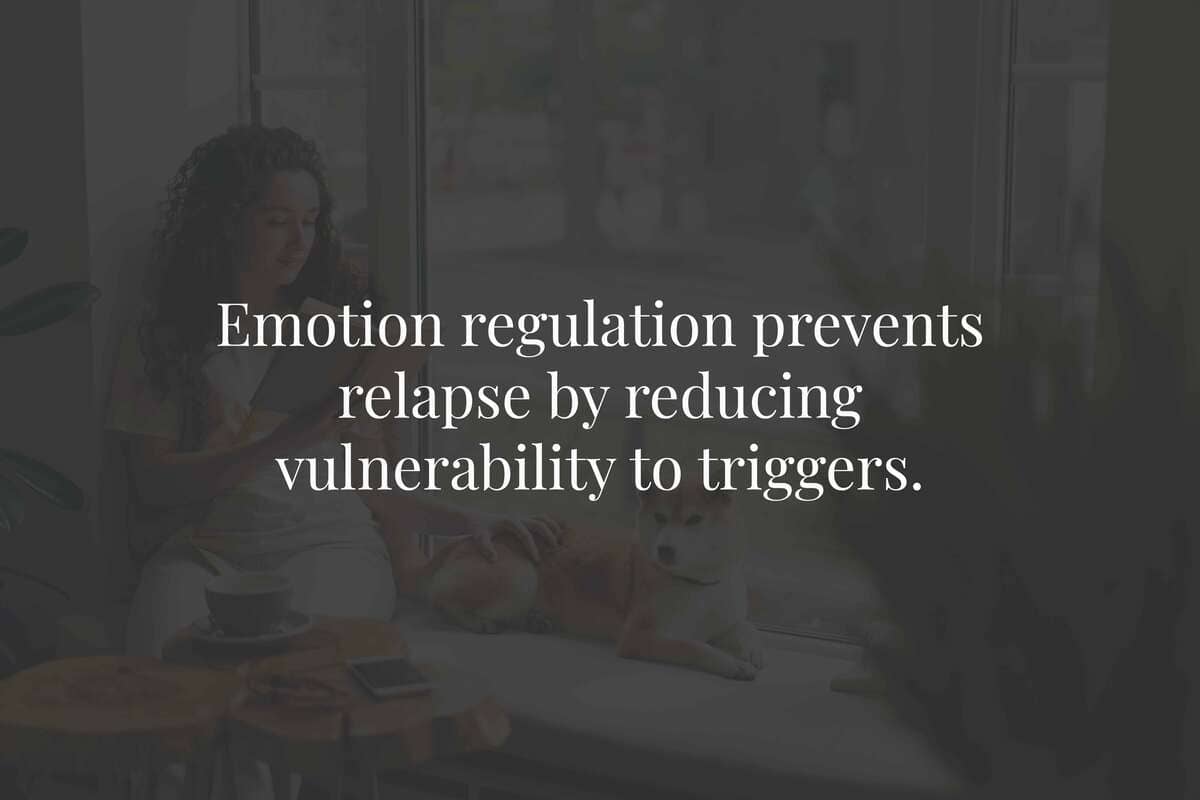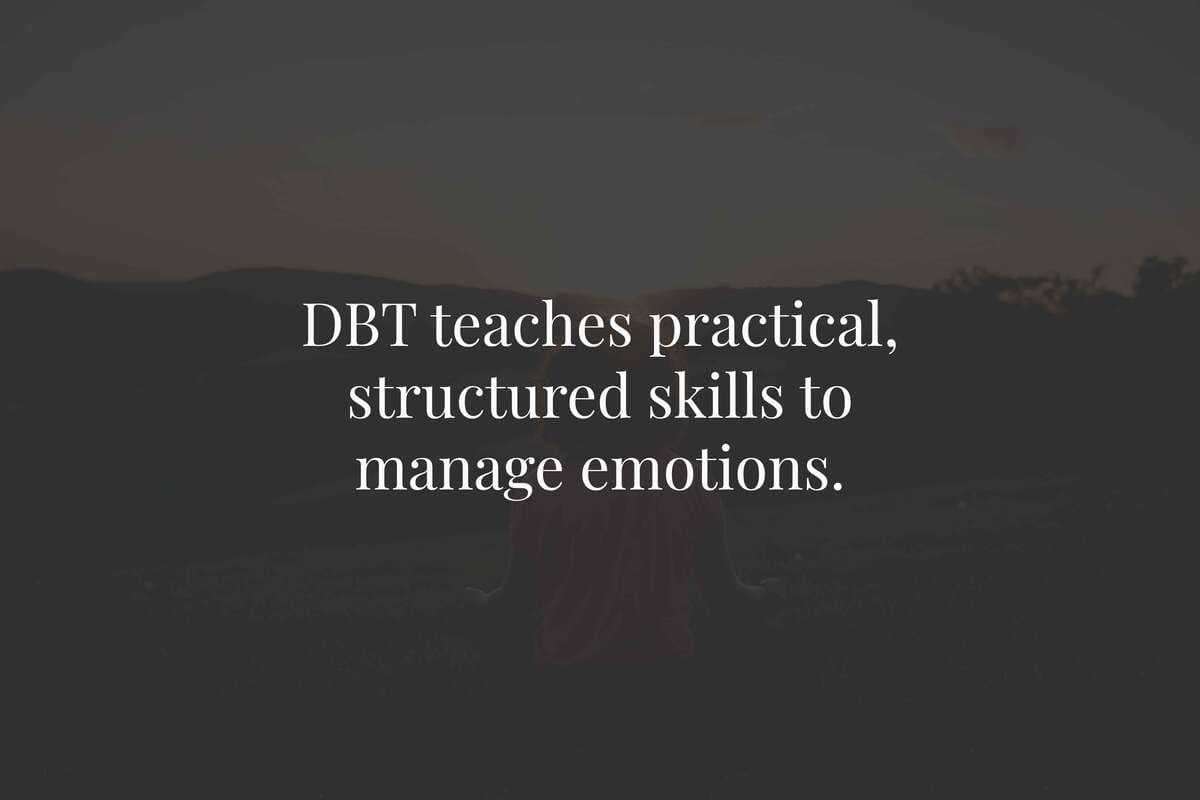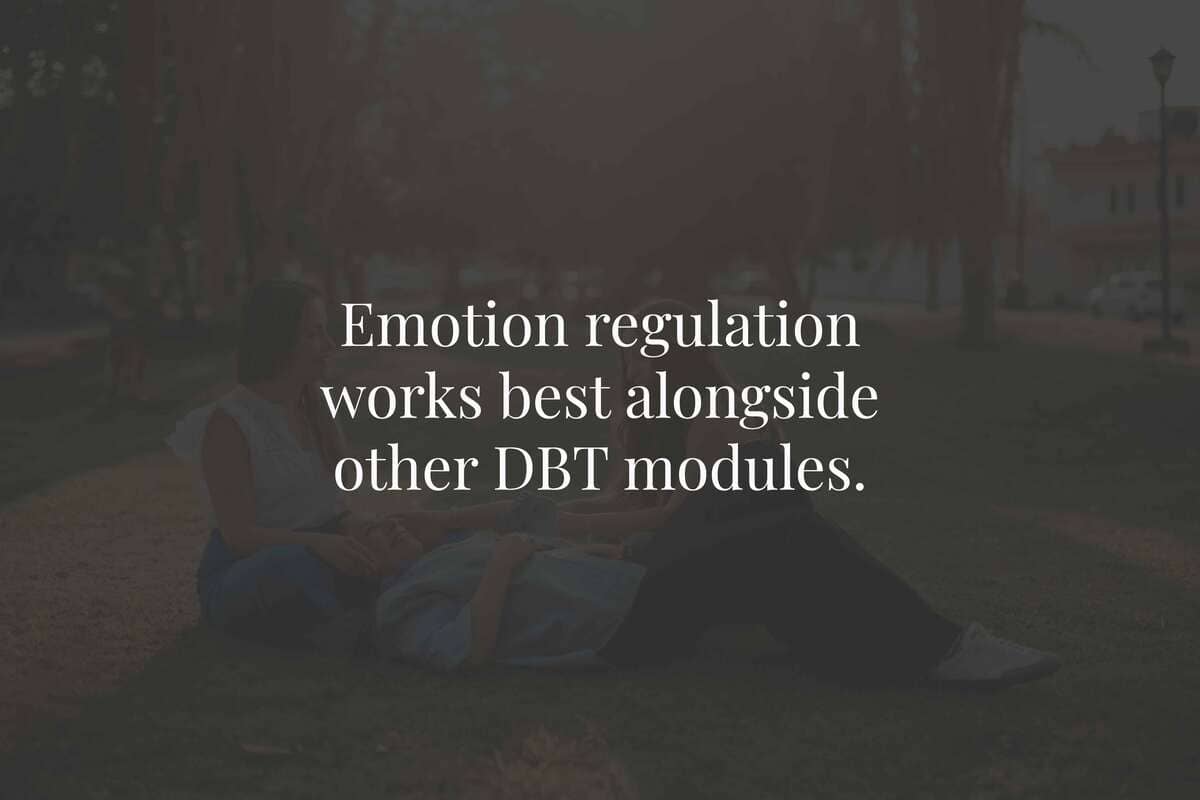DBT emotion regulation skills help people understand and manage their emotional responses—especially during recovery from substance use disorders. These skills support long-term emotional stability, making it easier to avoid relapse and build a more balanced life.
What Is Emotion Regulation in DBT?
Emotion regulation is one of the four key modules of Dialectical Behavior Therapy (DBT). It focuses on:
- Identifying emotions accurately
- Reducing emotional vulnerability
- Decreasing emotional suffering
For people in addiction recovery, strong emotions like shame, guilt, fear, or anger often trigger cravings or impulsive behavior. Learning how to respond rather than react becomes crucial for long-term sobriety.

Why Emotion Regulation Is Vital in Recovery
Emotional instability is a known relapse trigger. Many individuals used substances to numb or escape from intense emotions. Without new skills, those same feelings can resurface and threaten recovery.
DBT emotion regulation teaches people how to:
- Understand what they’re feeling and why
- Change their emotional response patterns
- Build resilience against emotional triggers
Core Emotion Regulation Skills
Here are the foundational skills used in DBT to improve emotional balance and reduce impulsive behaviors.
1. Identify and Label Emotions
This skill trains people to name what they’re feeling with precision. For example:
- Instead of “bad,” identify “ashamed,” “disappointed,” or “anxious.”
- Recognizing specific emotions makes them easier to manage.

2. Understand the Function of Emotions
Every emotion serves a purpose. Anger may signal a boundary violation. Sadness may signal loss. DBT encourages people to:
- Ask: “What is this emotion trying to tell me?”
- Validate that the emotion is real—even if not fully accurate or helpful
3. Reduce Emotional Vulnerability (ABC PLEASE)
This acronym provides daily practices to make emotions more manageable:
- Accumulate Positive Experiences: Do enjoyable activities regularly
- Build Mastery: Tackle challenges to feel confident
- Cope Ahead: Plan for emotional situations
- PLEASE: Treat physical illness, eat well, avoid mood-altering substances, sleep well, and exercise
By supporting the body and mind, people reduce the frequency and intensity of emotional spikes.
4. Opposite Action
When an emotion leads to an unhelpful urge, opposite action helps override it. For example:
- If you feel like isolating due to sadness, reach out to a friend
- If you’re anxious and want to cancel an event, go anyway
Acting opposite to the emotional urge sends feedback to the brain and reduces the emotion over time.
5. Check the Facts
This skill teaches people to challenge assumptions and emotional reasoning. For example:
- Feeling rejected doesn’t mean someone is actually angry at you
- Questioning the evidence can reduce emotional intensity
Applying These Skills to Recovery
Imagine someone newly sober gets into an argument and feels shame. Without tools, they might spiral into self-blame or reach for a substance to cope.
With emotion regulation skills, they could:
- Name the emotion: “I feel ashamed.”
- Understand it: “This emotion comes from being yelled at.”
- Check the facts: “I made a mistake, but I’m trying to make it right.”
- Use opposite action: “Instead of isolating, I’ll call my sponsor.”
- Apply ABC PLEASE daily to prevent emotional overload in the future.
By practicing these steps, recovery becomes more sustainable—even in emotionally charged situations.
Integrating Emotion Regulation with Other DBT Skills
Emotion regulation works best when combined with other DBT modules like distress tolerance and mindfulness. When cravings arise, using mindfulness to observe emotions and distress tolerance to stay present helps reinforce emotional control.
Learn more about DBT and how it integrates multiple skill sets to support recovery.

Practical Tools to Deepen Emotional Balance
The TIPP skill, discussed in “DBT TIPP Skill: Fast Tools for Intense Emotions,” is useful when emotions spike quickly and physical calm is needed fast—making it a powerful companion to emotion regulation.
For an overview of the most effective strategies across DBT’s four modules, “DBT Skills List: Which Skills Help Most in Recovery?” provides a helpful reference guide for building a custom coping toolkit.
Sometimes, understanding how DBT compares to other therapies can help in choosing the right fit. The article “CBT vs. DBT: Understanding the Key Differences” explores which approach may be best for different recovery needs.
If intense urges to use arise, “DBT Distress Tolerance: Getting Through Cravings Safely” provides critical guidance for surviving moments of crisis without relapse.



